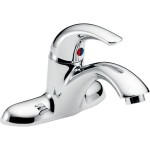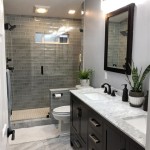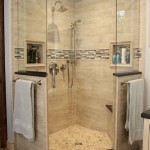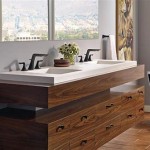Tiny Bugs That Jump In Bathrooms: Identification, Causes, and Control
The observation of tiny, jumping insects in a bathroom environment is a common concern for many homeowners. These minuscule creatures, though often harmless, can be unsettling and indicative of underlying environmental conditions that favor their proliferation. Proper identification is the first and most crucial step towards effective management. This article details the common types of jumping insects found in bathrooms, the factors contributing to their presence, and the strategies for their control.
The bathroom, with its inherent humidity, readily available moisture, and potential for organic matter accumulation, provides an ideal habitat for various insect species. The small size and jumping ability of these bugs often make them difficult to identify at a glance. A closer examination, aided by magnification if necessary, is essential to determine the specific type of insect and implement appropriate control measures.
Common Jumping Insects Found in Bathrooms
Several types of insects commonly manifest as tiny, jumping creatures in bathroom settings. Understanding their distinguishing characteristics is paramount for selecting the right treatment approach.
Springtails (Collembola): Springtails are perhaps the most frequent culprits behind jumping bugs in bathrooms. These minute arthropods, typically measuring less than 6 mm in length, are characterized by their forked tail-like appendage, known as a furcula, which is folded under their abdomen. When threatened, they release the furcula, propelling themselves into the air – hence the name "springtail." They are generally wingless and come in a variety of colors, including white, gray, brown, and even iridescent shades. Springtails thrive in damp environments with decaying organic matter. In bathrooms, they are often found near drains, under sinks, around showerheads, or in potted plants where moisture and mold are prevalent. Their diet consists primarily of fungi, algae, and decaying plant material. While generally harmless to humans, large populations can be a nuisance.
Psocids (Booklice): Though not true lice, psocids, also known as booklice, are small, soft-bodied insects that often appear white, gray, or brown. Some species possess wings, while others are wingless. While not all psocids jump, their small size (typically less than 1 mm to 2 mm) and quick movements can give the impression of jumping. They are attracted to damp, warm environments and feed on mold, fungi, grains, and starchy materials. Bathrooms provide a suitable environment for psocids due to the humidity levels and potential for mold growth. They are often found on walls, ceilings, and window sills.
Fleas: Although primarily associated with pets, fleas can occasionally find their way into bathrooms. These small, wingless insects are renowned for their jumping ability, which allows them to move efficiently between hosts and environments. Fleas are typically dark brown or reddish-brown and laterally compressed, enabling them to navigate through animal fur. They feed on blood and their presence is usually signaled by itchy bites on humans or pets. Finding fleas in a bathroom could indicate an infestation within the home, often originating from pets. It is crucial to identify and address the source of the infestation to effectively eliminate fleas from the bathroom.
Thrips: Thrips are slender, winged insects that are very small, often barely visible to the naked eye. While they are more commonly associated with plants, they can occasionally be found indoors, including in bathrooms. Thrips are not strong fliers, but they can jump or be carried by air currents. They feed on plant sap, pollen, and fungi. Their introduction into a bathroom may be accidental, perhaps carried in on clothing or through open windows. While their presence in bathrooms is less common than springtails or psocids, they should still be considered as a possible source of jumping bugs.
Factors Contributing to the Presence of Jumping Bugs in Bathrooms
Understanding what attracts and sustains these jumping insects is crucial for preventing their recurrence. Several environmental factors within bathrooms create favorable conditions for their survival and reproduction.
Humidity and Moisture: High humidity levels are a primary attractant for many of these insects, particularly springtails and psocids. Bathrooms are inherently humid environments due to showering, bathing, and general water usage. Leaky pipes, dripping faucets, poor ventilation, and condensation further exacerbate the problem. These insects require moisture to thrive and reproduce. Reducing humidity through proper ventilation, repairing leaks, and drying surfaces can significantly deter their presence.
Mold and Fungi Growth: Mold and fungi are a primary food source for springtails and psocids. Bathrooms, with their high humidity and potential for water damage, are often prone to mold growth on walls, ceilings, grout, and shower curtains. Any accumulation of organic matter, such as soap scum or hair, can further contribute to mold development. Addressing mold growth by cleaning affected areas with appropriate disinfectants and improving ventilation is essential for eliminating a primary food source for these insects.
Organic Matter Accumulation: Decaying organic matter, even in small amounts, can provide sustenance for these jumping bugs. Soap scum, hair, dead skin cells, and other debris that accumulate in drains, around sinks, and under fixtures can support their populations. Regular cleaning and proper maintenance of drains and bathroom surfaces are therefore important. A drain cleaner can be used periodically to remove accumulated organic material within the plumbing system.
Indoor Plants: Potted plants are often brought into bathrooms for aesthetic appeal. However, the soil in these plants can provide a breeding ground for springtails and other moisture-loving insects. Overwatering plants can create excessively moist conditions, further encouraging their proliferation. Employing proper watering practices, using well-draining soil, and monitoring plants for signs of infestation can help prevent plants from becoming a source of insects in the bathroom.
Strategies for Controlling Jumping Bugs in Bathrooms
Effective control of jumping bugs in bathrooms involves a multi-pronged approach that addresses the underlying causes and eliminates existing infestations using both preventive measures and direct control techniques.
Reduce Humidity: Lowering humidity is paramount in creating an inhospitable environment for these insects. Ensure adequate ventilation by opening windows or using exhaust fans during and after showering or bathing. Repair any leaky pipes or faucets to eliminate sources of excess moisture. Wipe down wet surfaces, such as shower walls and doors, after use. Consider using a dehumidifier in bathrooms with persistent humidity issues.
Eliminate Mold Growth: Thoroughly clean any visible mold growth with a mold-killing cleaner containing bleach or other effective disinfectants. Pay particular attention to grout, shower curtains, and areas around sinks and toilets. Improve ventilation to prevent future mold growth. Address any underlying water damage that may be contributing to mold development. Consider using mold-resistant paint or sealant in areas prone to moisture.
Regular Cleaning: Regularly clean bathroom surfaces to remove soap scum, hair, and other organic matter that can serve as a food source for these insects. Pay particular attention to drains, sinks, and under fixtures. Use a drain cleaner periodically to remove accumulated debris from drains. Clean shower curtains and mats frequently. Regularly vacuum or sweep the bathroom floor to remove any fallen insects or debris.
Insecticides (Use with Caution): Insecticides should be used as a last resort and with extreme caution, especially in areas where children or pets may be present. When using insecticides, always follow the manufacturer's instructions carefully and wear appropriate protective gear. Insecticides labeled for crawling insects can be applied to areas where the bugs are observed, such as around sinks, drains, and baseboards. Consider using a natural insecticide, such as diatomaceous earth, which is non-toxic to humans and pets but effective at killing insects. Diatomaceous earth can be sprinkled in areas where the bugs are observed. However, be aware that diatomaceous earth is only effective when dry and may require reapplication.
Professional Pest Control: In cases of severe infestation or if control measures prove ineffective, consider contacting a professional pest control service. A qualified pest control technician can accurately identify the specific insect species and recommend the most appropriate treatment options. They can also identify and address any underlying environmental factors that may be contributing to the infestation.
By implementing these strategies, homeowners can effectively manage and prevent jumping bugs in bathrooms, creating a cleaner, healthier, and more comfortable living environment.

Why Do I Have Springtails In The Bathroom Insectek Pest Solutions

Tiny Bugs That Jump When You Try To Kill Them May Be Springtails What S Bug

Springtails Missouri Department Of Conservation

Tiny Bugs That Jump When You Try To Kill Them May Be Springtails What S Bug

Why Are There Bugs In My Bathroom

Springtails What Are Those Tiny Black Bugs That Jump

How To Get Rid Of Springtails Handling A Springtail Infestation Abc Blog

Bathroom Bugs Identification Guide How To Get Rid Of Each Type A Z Animals

How To Get Rid Of Snow Fleas In Your Home 12 Tomatoes

Tiny Bugs That Jump When You Try To Kill Them May Be Springtails What S Bug
See Also







